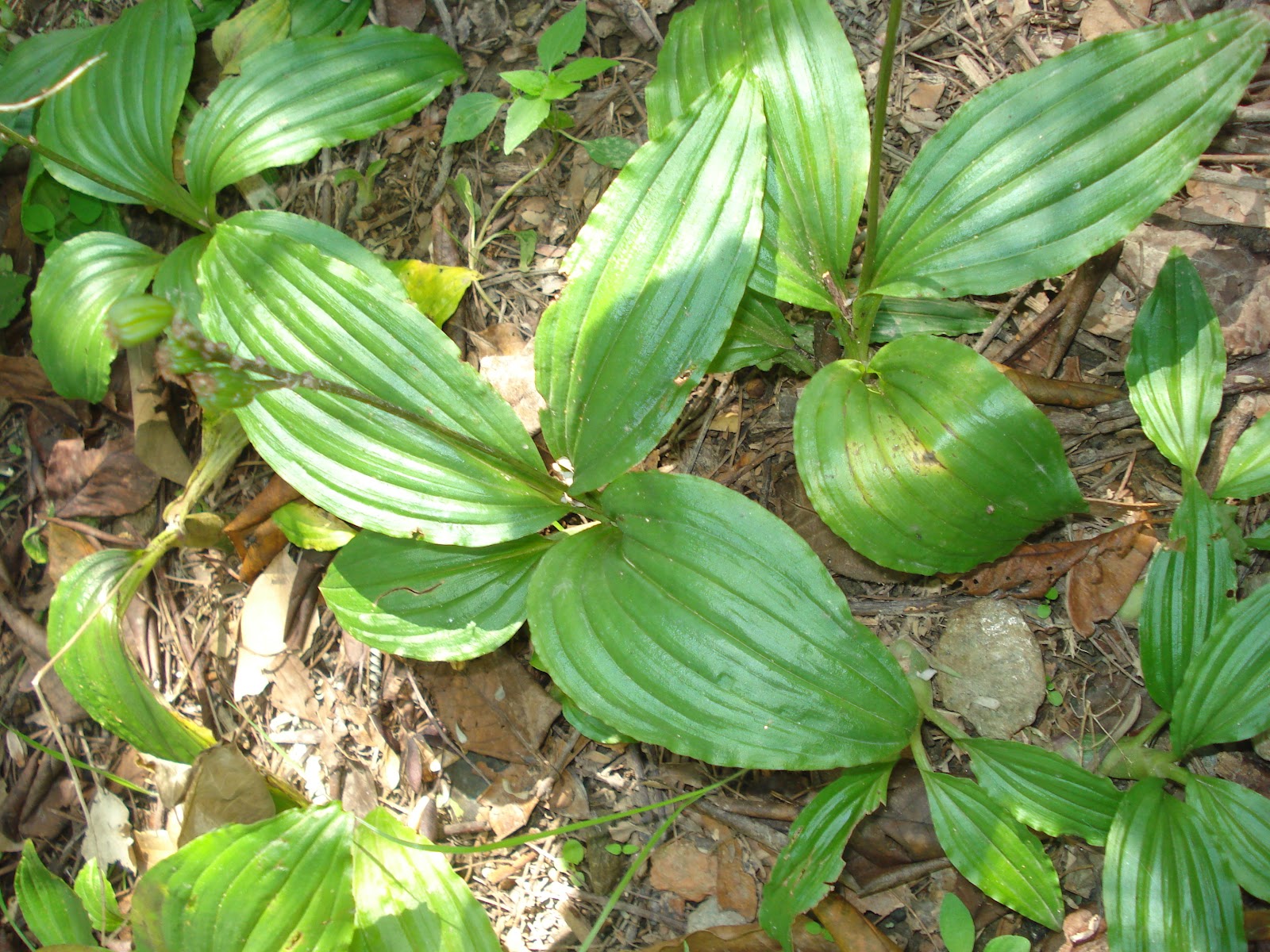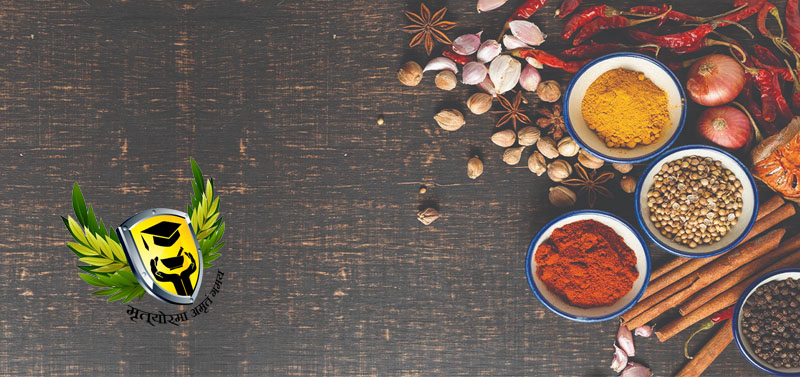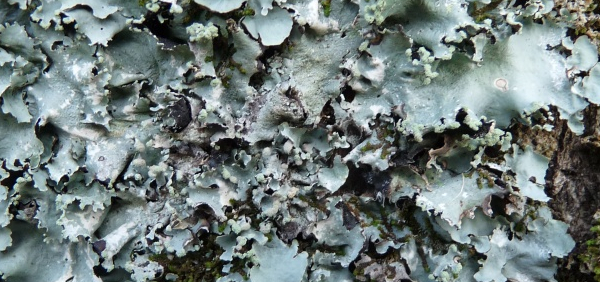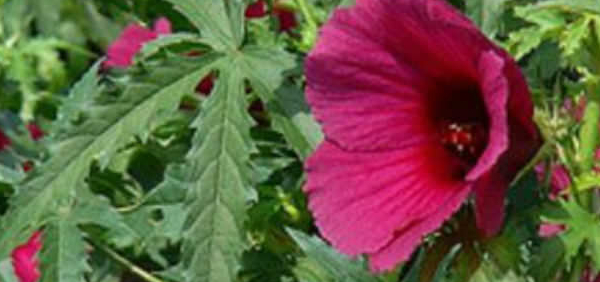jivaka :
 Jivakah consists of dried and fresh pseudo-bulb of Malaxis acuminata D. Don syn.
Microstylis wallichii Lindl. (Fam. Orchidaceae), a short stemmed terrestrial herb up to 25
cm in height, distributed throughout India on hills at an altitude of 2000 -3000 m.
Jivakah consists of dried and fresh pseudo-bulb of Malaxis acuminata D. Don syn.
Microstylis wallichii Lindl. (Fam. Orchidaceae), a short stemmed terrestrial herb up to 25
cm in height, distributed throughout India on hills at an altitude of 2000 -3000 m. HISTORICAL AND MYTHOLOGICAL REVIEW:
M. acuminata is an orchid belonging to the family orchidaceae. Orchidaceae is the largest family among monocotyledons, containing 600-800 genera. Chinese were the first who have described the orchids, their cultivation and medicinal uses. In mediaeval times and even later, the roots of the most orchids were used medicinally. Several of the orchids have bulging or thick tuberlike roots and are said to have proved nutritious emergency foods. However, to the great rarity of most of the species, already fast becoming exterminate, it is hoped that no one will experiment with these plants as food. However, at the present time in remote districts of the United States and Canada the roots, as “Nerve-Boots”Taxonomical Classification
Kingdom: Plantae - Plants
Division: Magnoliophyta - Flowering plants
Family: Orchidaceae
Allied species:
4 orchid species1. Malaxis muscifera
2. Malaxis acuminata
3. Habenaria intermedia
4. Habenaria edgeworthi
VERNACULAR NAMES
Sanskrit: jivya,dirghayu,cirajiviEnglish: none (jeevak)
Hindi: jeevak
Telugu: jeevakamu
Marathi: विलायती गवत vilayati gavat , lasun-ghas, lujen
Tamil: jeevakam
Malayalam: jeevakam
Kannada: ಜೀವಕ Jivaka
Varities:
-In India, 19 species of Malaxis are distributed and six of them occur alone in Arunachal Pradesh. Some of the important Indian species are Malaxis acuminata, M. andamanica, M. cylindrostachya, M. khasiana, M. muscifera, M. rheedii and M. versicolor (Chowdhery, 1998). Only a few species of Malaxis are medicinally importantDefinition
जीवकर्षभकौ ज्ञेयौ हिमाद्रिशिखरोद्भवौ |
रसोनकन्दवत्कन्दौ निःसारौ सूक्ष्मपत्रकौ |
जीवकः कूर्चकाकार ऋषभो वृषशृङ्गवत् ||१०९||
जीवको मधुरः शृङ्गो ह्नस्वाङ्गः कूर्चशीर्षकः |
ऋषभो वृषभो धीरो विषाणी द्राक्ष इत्यपि |
जीवकर्षभकौ बल्यौ शीतौ शुक्रकफप्रदौ |
मधुरौ पित्तदाहास्रकार्श्यवातक्षयापहौ ||११०||
Synonyms
Synonyms in Ayurveda: jivaka-The generic name Malaxis, established by Olof Swartz in 1788, is a Greek word meaning softening and refers to the soft texture of its leaves
Rasa: Madhura
Guna: Picchila Snigdha
Veerya: Sheetha
Vipaka: Maduram
Karma: Pittahara Vatahara
The pseudobulbs are sweet, refrigerant, aphrodisiac, febrifuge and tonic. They are useful in haematemesis, fever, seminal weakness, burning sensations, dipsia, emaciation, tuberculosis and general debility.
Cultivation:
Microstylis wallichii thrives well in moist, shady places covered with thick leaf litter deposits in dense oak–deodar forest zone. It preferably grows on the cool northern and Microstylis wallichii – flowers western hill slopes. Sometimes, this species is also found in depressions and gorges in hills such as shola forest type habitat. It grows in loose sandy loam soil, rich in humus, chiefly on upper stratum of organic layer, in the wet localities. The requirement of mean annual rainfall ranges between 1000 mm and 1500 mm, and the optimal mean annual temperature range is 10–15 °C.Propogation:
Orchids are characterized by very small seeds that are not fit for propagation. Only vegetative parts, whether pseudobulbs, daughter plants, nodal
segments of rhizomes or tubers, are feasible as propagation material
Harvesting:
Flowering: July-SeptemberThe crop matures in five months and the tubers are ready to be harvested when dormancy sets in during the last week
of October or first week of November. Bulbs are dug carefully after watering. The injured bulbs cannot be stored and are prone to decay
Phytochemistry:
Alcohol (ceryl alcohol), glucose, rhamnose and diterpenesM. acuminata is important for its medicinal uses in traditional system of medicine since Vedic period but study on its phytoconstituents is very less. Malaxis orchids are believed to contain large number of alkaloids, glycosides, flavonoids. Some phytoconstituents has been reported from M. acuminata. One sterol namely β-sitosterol (1) has been isolated from ethyl acetate extract of M. Acuminata19. Other reported Compounds include piperitone (2) citronellal (3), eugenol (4), Limonene (5), 1, 8- cineole (6), p- cymene (7), O-Methylbatatasin (8) and cetyl alcohol (9)
PHARMACOLOGY:
IMPORTANT FORMULATIONS1. Manasamitra Vataka,
2. Dasamularishta,
3. Cyavanaprashyaa,
4. Brahma Rasayana,
5. sivagutika,
6. Amrtaprasha Ghrta,
7. Asoka Ghrta,
8. Dhanvantara Taila,
9. Bala Taila,
10. Guduchyadi Taila,
11. Brihat Asvagandha Ghrta
Parts used for medicinal purpose
Stem, ,Dosage:
5-10 gmtuber- 3-6 gm
Antidote:
-NASubstitute:
Jivaka is substituted with Vidari (Pueraria tuberose) , Guduchi (Tinospora cordifolia) or Centaurea behen, Ashwagandha(Withania somnifera), Safed Musli(Chlorophytum borivilianum) andLillium wallichianum (Balkrishna et al2012)Adultrants:
-Malaxis acuminata D Don syn Microstylis wallichii Lindl is an important ingredient of an important polyherbal Ayurvedic formulation Ashtavarga. This species is variously known as Jivakah (as per the Ayurvedic Pharmacopoeia of India), Jivya, Dirghayu, Cirajivi (in Sanskrit), Jeevak (in Hindi and English), Jeevakam (in Malayalam and Tamil), Jeevakamu (in Telugu). These different names (for the same identity) generally lead to misidentification, unintentional adulteration etc with an adverse impact on its potency.Due to its widespread demand andlimited availability it is being extremelyadulterated by rootstock of Ipomoeadigitata (Chinmay et al 2011)
Controversy:
-Rshabhaka(Malaxis muscifera)Commercial value:
The species is of great medicinal significance. Its dried pseudobulbs form an ingredient of ‘Ashtavarga’ [a group of eight drugs, namely Jivak, Rishbhak, Mahameda, Meda, Kakoli, Khirkakoli, Ridhi and Bridhi (Singh, 2006)] used in the preparation of Ayurvedic tonic ‘Chyavanprash’. The tonic is energizing, cures tuberculosis, and enhances sperm formation (Chauhan, 1990; Govindarajan et al., 2007). Extensive pressure of commercial collection and habitat destruction have detrimentally affected the size and frequency of its natural populations which even otherwise stand impaired because of poor fruit set and slow vegetative propagation.M. acuminata is the main ingredient of Chyawanaprash
Morphology:
M. acuminata is a small, medium-sized terrestrial orchid, up to 30 cm in
length, with pseudobulbous stem covered at base by old leafy scales. Leaves 3-4, ovate- lanceolate, membranous and measuring 10-15 5-6.5 cm showing acute apex and
undulate margins. Flower pale-green tinged purple, shortly stalked, 1-1.2 cm across,
present on many flowered, 8-10 cm long spikes; bracts linear, minute. Sepals oblong;
lateral broad and short with recurved margins. Petals are linear, longer than sepals. Lip
shield like, broadly ovate, somewhat convex, tip notched, auricles at base straight or
overlapping. Leaves have sheathing leaf base and new plants grow near the base of the
decaying mother plant. Flowers, in terminal racemes, are small, pale yellowish-green in
color, but with a purple tinge.
Fresh pseudo bulb conical in shape, fleshy, green, smooth, shining, 1 to 9 cm long
and 1 to 3 cm broad, slightly mucilagenous, covered with shining, transluscent light
green, membraneous, 3 or 4 sheathing leaves arranged alternately and having parallel
venation; stem rudimentary; roots arising at the union of stem and bulb. Dried pseudo bulbs conical, transluscent, reddish-brown in colour, measuring 2 to 5 cm
long and 0.25 to 1 cm wide, covered with sheathing leaves, which are light brown,
membraneous with parallel venation; surface rough, punctated, fracture hard; cut surface
dark brown, coarsely granulated with irregular margins and white spots; pleasant smell;
astringent, slightly mucilagenous in taste
Histology:
T.S. of pseudo bulb oval to circular in outline; section passing through scaly leaves which exfoliate, showing a single layered, thick walled, sclerified epidermis having acicular crystals of calcium oxalate, followed by mesophyll adjacent to the upper epidermis composed of 2 to 4 layers of elongated cells with lignified reticulate thickening the lignification was confirmed with phloroglucinol and Conc. HCl, devoid of chlorolplast; vascular bundles prominent, phloem well developed with large sieve plates, surrounded by sclerenchymatous bundle sheath; section passing through bulb shows a single layer of cuticle and a layer of thick walled sclerified epidermal cells; below this lie 1 or 2 layers of large sclerified cells and these extend unevenly into ground parenchymatous tissue; ground parenchyma irregular, with large air spaces with passage cells in the form of small protuberances at some places; vascular bundles scattered throughout the ground tissue surrounded by thick walled sclerenchymatous cells, which occasionally extend into intercellular spaces.Geographical distribution:
Malaxis acuminata is an Asiatic species distributed widely in Thailand, China, Burma, Bhutan, Nepal, and India. In India, it dwells in the Himalayan, Khasia and Jaintia, and peninsular (Western Ghats, Nilgiris) hills on the mainland and Andaman hills offshore. Along the Himalayas, it extends from Shimla eastwards to Sikkim within an altitudinal range of 1500-2300 m, and occupies humus-rich and moist substratum in shaded situations.ECOLOGICAL ASPECT:
-Forest, Grassland, ShrublandPlant conservation:
-Jeevak, the orchid is a critically endangered species and collection from the wild can cause irreparable damage to the survival of this species. Collection from wild has been banned in certain states like Uttarakhand. No report on its commercial cultivation is available so far.General Use:
To treat of haematemesis and fever, seminal weakness, burning sensations, emaciation, tuberculosis and general debility.Refrigerant, aphrodisiac, febrifuge and tonic.
Therapeutic Uses:
swasadaha
kasa
kshaya
Raktapitta,
Raktavikara,
karshya
shosha
rejuvenating tonic, styptic aphrodisiac, and
antioxidant. It has a cooling action and cures bleeding diathesis,
fever, phthisis, and burning sensation. It is an important ingredient of Ashtawarga, under Jivaniya Varga of Charaka Samhita, which literally means ‘life-giver’.
Systemic Use:
It is used in condition of sterility, vitiated condition of pitta and vata, seminal weakness, internal and external haemorrhages, dysentery, fever, emaciation, burning sensation and general debility. Paste of pseudo bulb can be applied externally in case of insect bites, and when mixed with other plants are used in the treatment of rheumatism. Ayurvedic Dynamics of the plants includes sweetness in taste, cold in potency, pacifies vata and aggravates kapha. It has also been used pharmacologically in bleeding diathesis, Burning sensation, and Phthisis (lung disease)Administration:
Paste of pseudo bulb can be applied externally in case of insect bites, and when mixed with other plants are used in the treatment of rheumatism
externally in case of insect bites, and when mixed with
other plants are used in the treatment of rheumatism
Pharmacological:
Balya,Pittahara,
Rasayana,
vatahara,
Dhatuvardhaka,
shukrala,
Bramhana¸
Snehopaga,
jeevaniya
Clinical trials:
Arenmongla, T and CR Deb (2012) Germination of immature embryos and
multiplication of Malaxis acuminata D. Don.: an endangered therapeutically
important orchid, by asymbiotic culture in vitro. Indian J. Biotech., 11: 464-46
Garg, P, P Aggarwal, P Sharma and S Sharma (2012) Antioxidant activity of the
butanol extract of Malaxis acuminata (Jeevak). Journal of Pharmacy Research,
5(5): 2888-2889
Research:
Deb, CR and T Arenmongla (2013) In vitro regeneration potential of foliar
explants of Malaxis acuminata D. Don.: A therapeutically important terrestrial
orchid. Applied Biological Research,
Precautions:
-not knownToxicity studies:
-not knownUse in other system of medicine:
-Orchids are widely used in traditional Chinese medicines.CONCLUSION:
Malaxis acuminata (Jeevak) is of a renowned status in the Ayurveda. M. acuminata is a globally soil loving plant that grows in the shady areas of semi-evergreen to shrubby forest. Its dried pseudo-bulbs are important ingredients of several Ayurvedic preparations like Chyawanprash, therefore it is well known for its medicinal properties. It belongs to Ashtverga (combination of eight drugs) which is one of the core parts of the AyurvedaAyurvedic Formulations:
Common Ayurvedic Formulations of jivaka with their IndicationsBrahma Rasayana
KEY WORDS: jivaka Malaxis acuminata D.Don, Microstylis wallichii Lindl.
- » Classification and names of jivaka
- » Synonyms and definitions of jivaka
- » Drug Properties of jivaka
- » Chemical Constituents of jivaka
- » Standardization of jivaka
- » Parts used and Dosage of jivaka
- » Morphology and Histology of jivaka
- » Distribution and Conservation of jivaka
- » Cultivation of jivaka
- » jivaka in the market
- » Medicinal Uses of jivaka
- » Researches and clinical trails of jivaka
- » jivaka in other sytems of medicine
- » Ayurvedic formulations with jivaka
- » Images of jivaka













